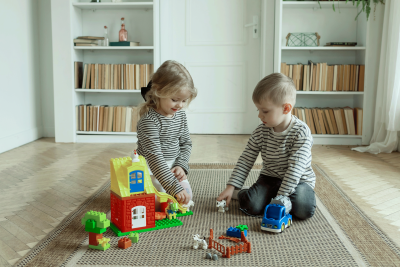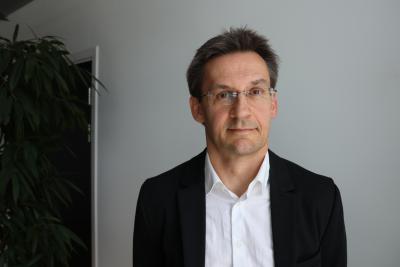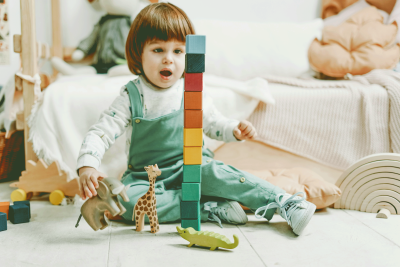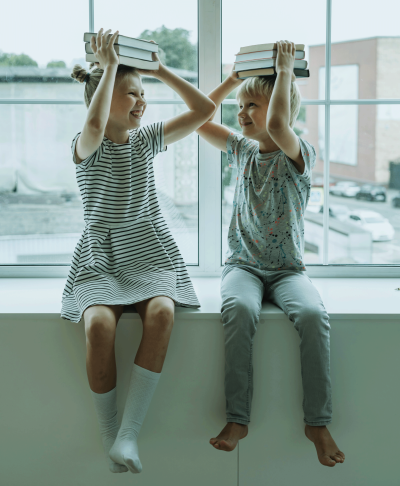Deep down in young children’s memories
How can we dig up our earliest experiences from our memory? Researchers at Aarhus University are looking for answers and using a specially designed test to study spontaneous memories in children aged 3-4.

‘What’s the first thing you remember?’
The vast majority of us have been asked the question or thought about it. Right away, we find out that it is a difficult question to answer and that it’s pretty obvious how complex and difficult it is to decode the human memory.
What do you really remember from your infant years? For example, is what springs to mind something you were told by your parents, which you somehow ’refashioned’ so it feels like a memory. Or is it the real thing – an experience you actually had when you were small and new to the world?
Generally speaking, the further back in time we try to go, the more we challenge our autobiographical memory – the ability to remember our own past consciously.
‘The earliest personal memories usually relate to things that happened around the age of three or four’, says Peter Krøjgaard, Professor of Developmental Psychology at the Centre on Autobiographical Memory Research, Department of Psychology, Aarhus University (AU).
"The literature has largely overlooked the final “link” in this process – the intentional and purposeful search process, or “strategic recall”. So we haven’t paid much attention to the fact that the search process itself may be cognitively demanding for young children.”
‘If you ask an adult, “What’s the first thing you remember?”, they will have some tools to help them find an answer,’ explains Krøjgaard.
‘First of all, it goes without saying that you need a stored memory to recall. But on top of that, you also need to seek it out actively and consciously. The literature has largely overlooked the final “link” in this process – the intentional and purposeful search process, or “strategic recall”. This is probably because adults usually find the process unproblematic and do it automatically, at least in part because they have well-developed frontal lobes. So we haven’t paid much attention to the fact that the search process itself may be cognitively demanding for young children.’
‘If you ask children aged three or four what they did in the nursery today, for example, they may, unlike adults, find it surprisingly difficult to answer – as lots of parents find out when they pick up their children at the end of the day,’ Krøjgaard continues.
‘Several researchers have interpreted three- or four-year-olds’ difficulty recalling what they’ve just done as an indication that a memory trace of the experience may not have been formed, and that children only develop autobiographical memory later in life. But perhaps it is not necessarily due to the absence of a memory that children find it difficult to answer such questions. Perhaps they find the very act of searching demanding – partly because children’s frontal lobes develop relatively late.
In other words, the memories may well be stored – it’s just not easy for children to access them,’ he explains.
Along with three colleagues at AU – Dorte Berntsen, Osman Kingo and Trine Sonne– Krøjgaard has devised a systematic method to study whether young children can remember what they are shown. A secondary aim is to examine the specific role of the search process in this context.
Almost out of the blue
Although small children may have difficulty strategically searching their autobiographical memory, they can recall memories in a different way, i.e. spontaneously.
Studying this aspect has made it possible for Krøjgaard and his colleagues at the Centre on Autobiographical Memory Research to do work on young children’s memories.
Adults have spontaneous recall as well. ‘As Berntsen and her colleagues have documented, adults usually have many spontaneous memories,’ says Krøjgaard.

These memories are often triggered by associations sparked by various external stimuli, e.g. a piece of music, a particular object – or encountering a familiar scent or aroma you can’t quite place, until it all suddenly falls into place in the most beguiling way. Perhaps you catch a whiff of the secret ingredient that Grandma, long since departed, used to bake into her cakes.
The moment the link is made, memories of her come flooding back, and suddenly you see her clearly in your mind’s eye.
These recollections are stored in autobiographical memory, which is part of long-term memory. They can lie there, dormant, for a long time until the taste of a specific ingredient spontaneously – almost out of the blue – brings them back to the surface.
Spontaneous memories in young children
Krøjgaard was the first Danish researcher to conduct systematic psychological experiments with young children. He started in 1996, when he became a PhD student immediately after gaining his master’s degree in psychology. He has been asking parents to bring their young children to his lab at AU’s Department of Psychology ever since.
The children who take part in the experiments are always accompanied by at least one parent. Fortunately, when Krøjgaard calls for participants, there’s never any shortage of volunteers.
‘Sometimes, interest is particularly high. This was the case a few years ago, when Danish TV aired a beautiful and fascinating BBC series about the human child, and three times as many parents as usual got in touch with us.’
But how exactly do you study young children’s spontaneous memories and what can we learn from this research?
In principle, it may seem paradoxical that experiments can be conducted into spontaneous memories – they’re spontaneous after all. Part of the answer is the use of the Unique Event Paradigm, developed by Krøjgaard and his colleagues.

As part of the study design, three- and four-year-old children visit the laboratory twice. The first time, the child goes into a room where they find a brown wooden box and a red steel cabinet. Both are locked. The box contains games (a bowling game, some buckets and a ball). The cabinet contains two mechanical teddy bears that sing and wiggle their ears.
The child draws lots and then either play the games or plays with the teddy bears – but never both
A week later, the child returns to the laboratory with their parent – and is again placed in front of the box and the cabinet, both of which are locked. This is where it gets interesting.
The researcher exits the room, leaving the child and parent sitting in front of the box and cabinet. For the next two minutes, a video camera records everything the child says and does. In particular, it documents whether the sight of the box or cupboard prompts the youngster to recall spontaneously their first visit and what they played with.
The parent has been instructed not to comment on any memories the child may have – and has not been allowed to talk about the first experiment in the period between the two visits. The research team, who don’t know whether the child was randomly introduced to the games or the teddy bears on the first visit, then score the two-minute video recording.
The results show that on their second visit to the laboratory, 30–60% of children talked about what they did during the first visit without being prompted.
In other words, the researchers had succeeded in ‘planting’ a memory in a significant proportion of the child participants. Not only that, but they had ‘planted’ it so well that on the second visit – and perhaps especially on seeing the cupboard and the box – the children were able to recall elements of the previous visit spontaneously and by association.
Some of the children were asked afterwards if they could remember what was in the box and what was in the cabinet. The point was to find out if the children were able to conduct a strategic search – that is, to intentionally look back through their memories.
When it came to spontaneous recall of the first visit – i.e. unprompted remarks about the first visit when they returned for a second time and saw the cabinet and box again – there was no difference in performance between three-year-olds and four-year-olds. But there was a difference when the children were asked, for example: ‘Do you remember what was in the cabinet/the box?’
‘The four-year-olds clearly performed best, most probably because the frontal lobes of the brain, which play an important role in strategic recall, develop significantly between the ages of three and four,’ says Krøjgaard.
‘The results show that three- and four-year-olds have stored memories of the event the week before and recall only differs between the two ages when they are required to search their memories consciously, not when they use spontaneous recall.’
Childhood amnesia
By studying spontaneous memories in young children, psychologists from the Centre on Autobiographical Memory Research hope to shed light on a number of other questions. Specifically, they want to explore what lies behind childhood amnesia – a phenomenon that renders adults incapable of recalling very much from their early life.

‘Childhood amnesia can’t be explained by a single cause – several factors contribute to the phenomenon,’ says Krøjgaard.
‘One of these is simply forgetting, which is far more pronounced in young children than in adults. To start with, younger children have earlier first memories than older ones. One experiment asked children aged five, seven, nine and 11, “What’s the first thing you remember?” In general, the five-year-olds had earlier memories than, say, the nine-year-olds. These results show that children forget as they grow older.’
‘Secondly, we know that the forgetting curve is generally steeper in children than in adults,’ says Krøjgaard. ‘The results from studies of spontaneous memories indirectly support the thesis about forgetting, as they make it seem likely that young children do indeed establish memories, but may have difficulty accessing them later – especially when they are asked about them directly. As a result, adults have probably had all sorts of memories that we have quite simply forgotten as we grew up’.
But if direct questions don’t work with young children, how can parents encourage them to talk about what they did at nursery?
‘Try a different approach Try the spontaneous path,’ says Krøjgaard. ‘For example, if you know that your child visited the forest that day, a photo from the trip – or even better, a specific object from the forest, such as a pine cone – might trigger a spontaneous memory.’